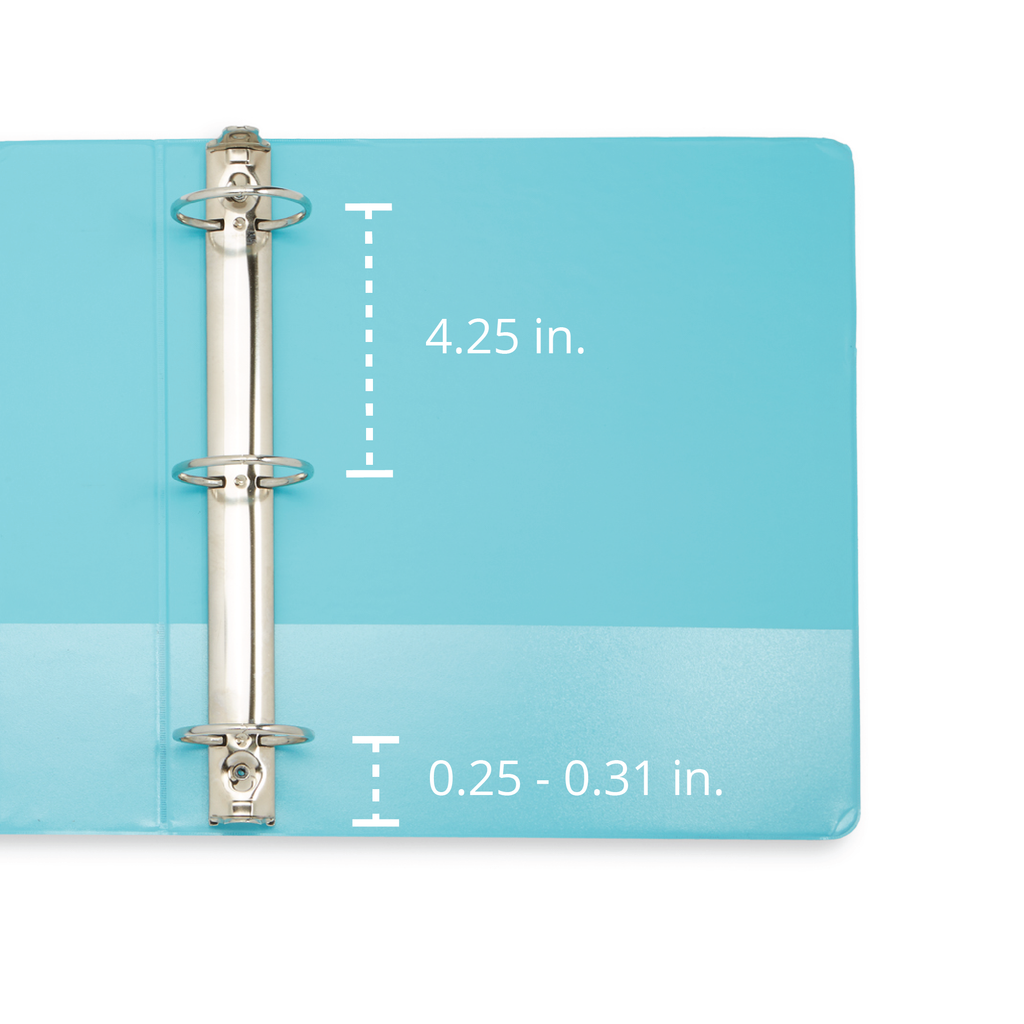

The distance from the punched holes to the nearest edge of the paper is less critical, since small differences do not affect the compatibility of paper and binder. "Ledger" size binders hold 11-by-17-inch (28 by 43 cm) paper, and may use standard 3-ring spacing or multiple additional rings. A standard 8 + 1⁄ 2 by 11 inches (220 mm × 280 mm) sheet of paper has three holes with spacing of 4 + 1⁄ 4 inches (110 mm).
#Standard hole spacing for 3 ring binfer iso
The most common type in Canada and the United States is a three-ring system for letter size pages ( 8 + 1⁄ 2 by 11 inches or 220 mm × 280 mm), whose size being similar to ISO 216-based A4 size. Countries that use ISO paper sizes (as specified by ISO 216), which is most countries, use a two- or four-hole system for holding A4 sheets. The North American de facto standard spacing is 4.25 inches (108 mm) between holes.īinders come in many standard sizes with respect to both capacity and paper size. 778070 on Decemfor a 3-ring binder that became a standard in the United States. These holes are 21 millimetres (0.83 in), 70 millimetres (2.8 in), and 21 millimetres (0.83 in) apart. The hole placement of Tengwall's Trio binder is still used as a de facto standard for hole punching in Sweden under the name triohålning. Tengwall's design uses four rings, in two paired sets. The distances between holes are 80 millimetres (3.1 in) (3 × 8).Īnother design for ring binders was invented in 1889 by Andreas Tengwall in Helsingborg, Sweden, and patented in 1890 under the name 'Trio binder', named after a business consortium of Tengwall and two associates. The four-hole version has no ISO standard. The ISO standard two holes are 80 millimetres (3.1 in) apart, according to ISO 838. Leitz introduced the "finger hole" on the side of the binder to aid removal from crowded shelves, thereby creating the modern ring binder. German Louis Leitz, founder of Leitz, later made some important changes in development of ring binders in Stuttgart-Feuerbach.

He also registered a patent on November 14, 1886, for his Papierlocher für Sammelmappen ("paper hole maker for folders", or hole punch). German Friedrich Soennecken invented ring binders in 1886 in Bonn. Early designs were patented during the early 1890s to the early 1900s.Īmerican Henry Tillinghast Sisson invented the three ring binder, receiving patent no. The binders themselves are typically made from plastic with metal rings. The rings may be secured by lever arch mechanisms or other securing systems, or may be spring-loaded. In North America, the rings themselves come in a variety of sizes, including 0.5, 1, 1.5, and 2 inches (13, 25, 38, and 51 mm), though other sizes are also available. These are held in the binder by circular or D-shaped retainers, onto which the contents are threaded. These binders come in various sizes and can accommodate an array of paper sizes. Ring binders ( loose leaf binders, looseleaf binders, or sometimes called files in Britain) are large folders that contain file folders or hole punched papers (called loose leaves).


 0 kommentar(er)
0 kommentar(er)
